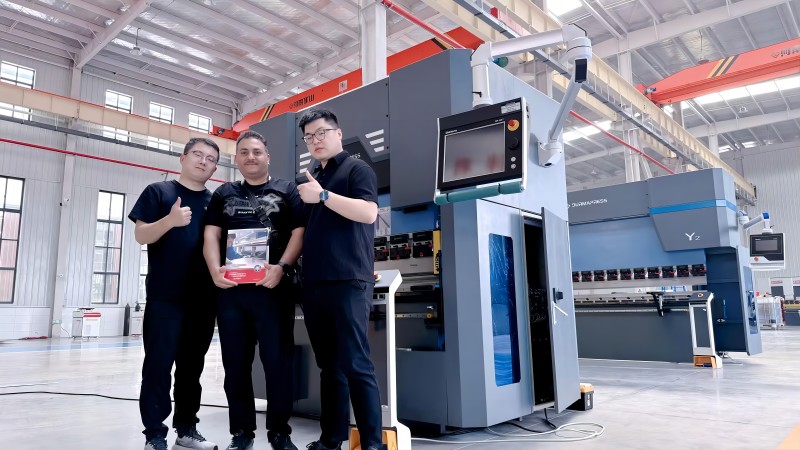The working principle of plate shearing machine involves converting circular motion into linear motion. The main motor drives the flywheel, which engages the gear, crankshaft (or eccentric gear), and connecting rod through a rigid clutch, resulting in linear motion of the slider. The movement from the main motor to the connecting rod is a circular motion.
For connecting rods and sliders to transition between circular and linear motion, a transmission point is required, which can be designed using either a ball mechanism or a pin (cylindrical) mechanism. This is a mechanism that converts the circular motion of the slider into linear motion.
Plate shearing machines apply pressure to the material to cause plastic deformation to achieve the desired shape and accuracy. This process requires a set of molds (upper mold and lower mold). The material is placed between these molds and the material deforms when the machine applies pressure. The reaction force generated by the material during deformation is absorbed by the machine body.
A notable noise source in machine operating mechanisms is clearance noise generated from friction within the crank connecting rod slider mechanism. This mechanism includes three friction pairs: a crankshaft journal and a crankshaft tile, a big head bearing bush on the crank neck and connecting rod, and a small head (ball head) on the connecting rod and a slider ball head seat. Masu. Manufacturing and assembly tolerances and operating requirements create unavoidable gaps between these components. A loud impact sound is generated when moving from free motion to contact motion.
This noise has a wide frequency range and a pronounced high frequency component. Larger gaps result in higher noise levels. Additionally, for a given clearance, increasing the slider stroke frequency also increases the noise level.

Contact us for more information
If you have any information about our products, please contact us and we will reply within 24 hours.
